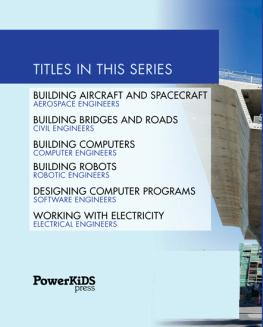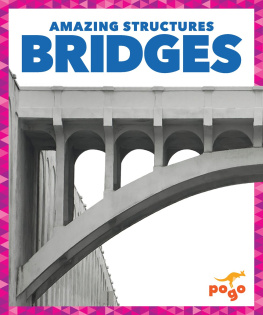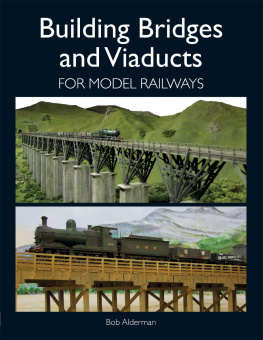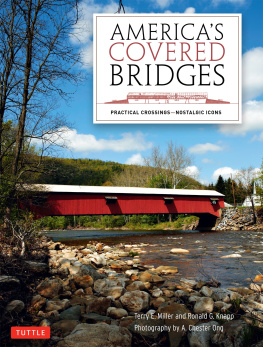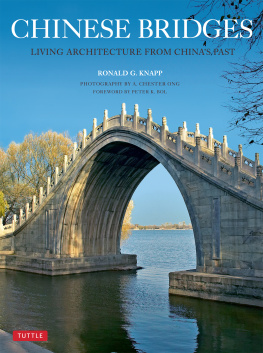This book is sold subject to the condition that it shall not, by way of trade or otherwise, be lent, resold, hired out or otherwise circulated without the publishers prior written consent in any form of binding or cover other than that in which it is published, and without a similar condition being imposed on the subsequent purchaser.
The right of Chris Peacock to be identified as author of this book has been asserted in accordance with section 77 and 78 of the Copyrights Designs and Patents Act 1988.
Whilst every care has been taken to ensure all fact and figures are correct, the author or publisher cannot be held responsible for any errors in this publication.
All images used are either believed to be in the public domain or have been attributed where necessary. Every effort has been made to verify image rights, however please contact the publisher to advise if any corrections are required.
To my family, friends, and everyone who made this book possible.
Building bridges across previously impassable expanses of land or water was one of early mans greatest achievements. Since those ancient days, the skill of bridge-building has become quite literally a fine art.
This quick guide shows the reader ten of the worlds greatest bridges. Each one has a reason for being in this list whether they are works of art, icons of an age, or simply an engineering work of perfection.
There are of course many more bridges which could be included in a list such as this, and, if time allows, a volume 2 may well be written.
But for now, please enjoy my choices which I feel make up ten of the most amazing bridges in the world
10 Khaju Bridge, Iran
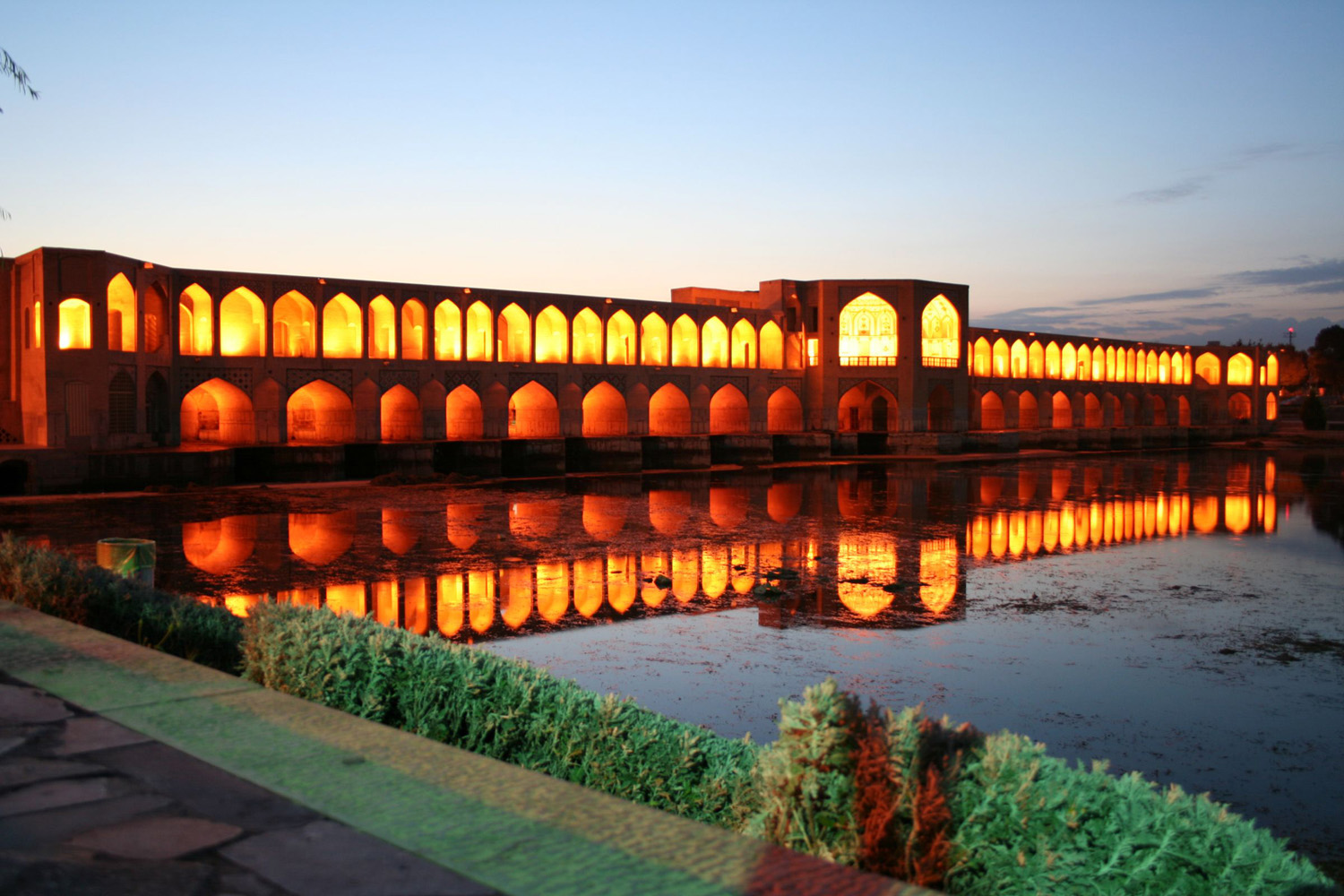
Khaju Bridge, lit up to accentuate its beauty
Reason for inclusion:
Beauty and style.
Khaju Bridge is generally considered to be the best-known and most beautiful bridge in Iran. It was built on the foundations of a previous bridge over 300 years ago, and serves as a bridge, a dam and also a place for public meetings. Originally it was decorated with ornate tiles and paintings, and held a stone seat where the King would admire the views. It has been said that Khaju bridge is the culminating moment of Persian bridge architecture, with the bridge constructed to highlight the natural beauty of the river.
Khaju Bridge is 105 metres long and 14 metres wide and has 23 arches. It is made of bricks and stones (the stones are over 2 metres long). The bridge has sluice gates under the archways over the river, which - when closed - allow water to irrigate gardens upstream from the bridge.
9 Ponte Vecchio, Florence
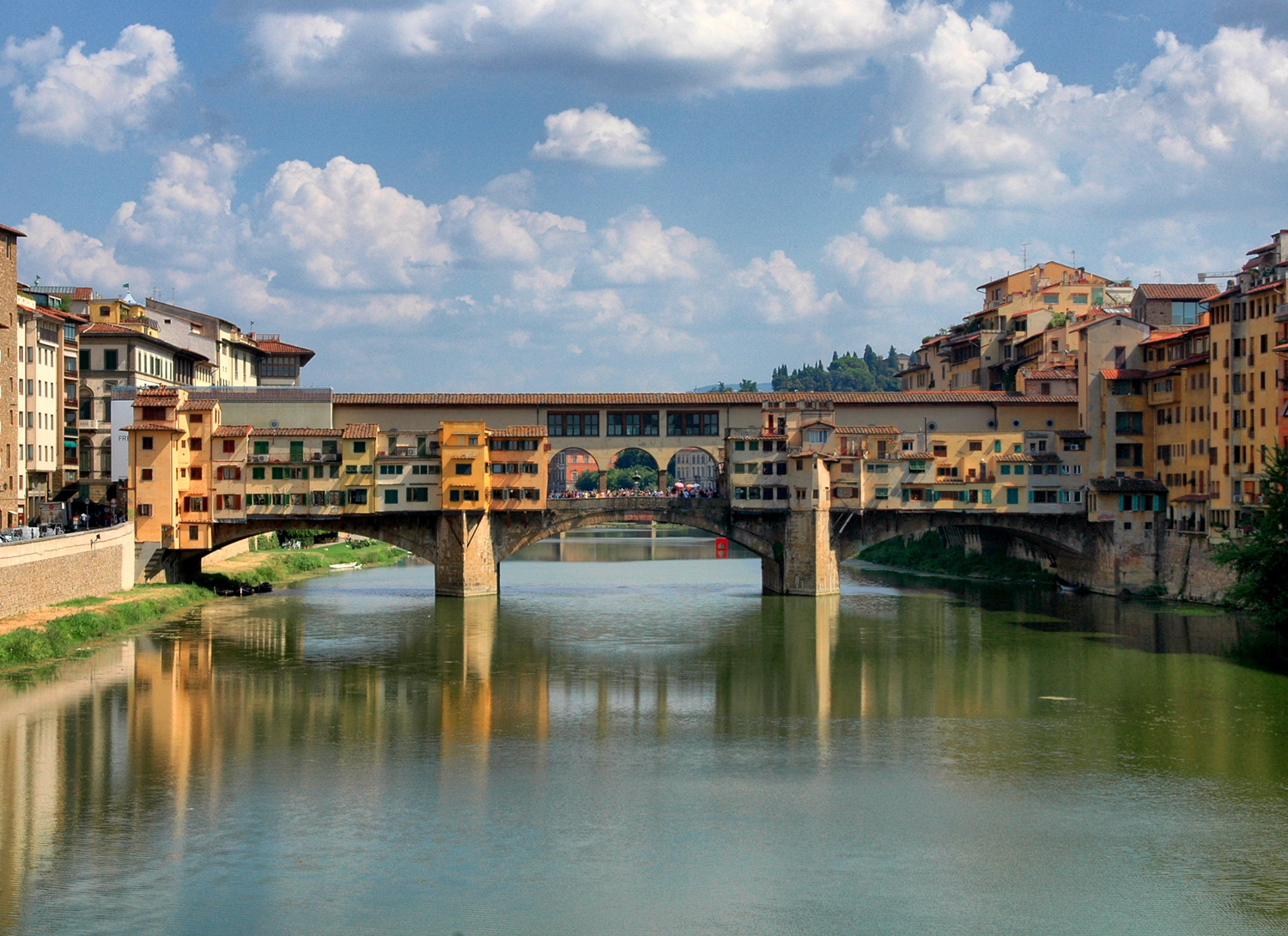
The Ponte Vecchio, reflected in the river Arno
Image courtesy of Amada44
Reason for inclusion:
A traditional medieval bridge, still with many original features.
The Ponte Vecchio in Florence is a medieval bridge, noted for the fact it still has shops built along it - a common feature of bridges at the time it was built. Although jewellers and souvenir sellers currently occupy the buildings along the bridge, they were originally inhabited by butchers and the like.
The bridge spans the river Arno at its narrowest point - a site where there was even a bridge in Roman times. It was swept away by floods in 1117, rebuilt, swept away again in 1333, and finally rebuilt in 1345.
The Ponte Vecchio consists of three segmental arches: the main arch has a span of 30 metres, with the two side arches each spanning 27 metres. It has always hosted shops and merchants who displayed their goods on tables outside of their premises
During the Second World War, as the German army retreated through Italy, they destroyed every bridge in Florence, with the exception of the Ponte Vecchio - an order coming from Hitler himself.
8 Forth Bridge, Scotland
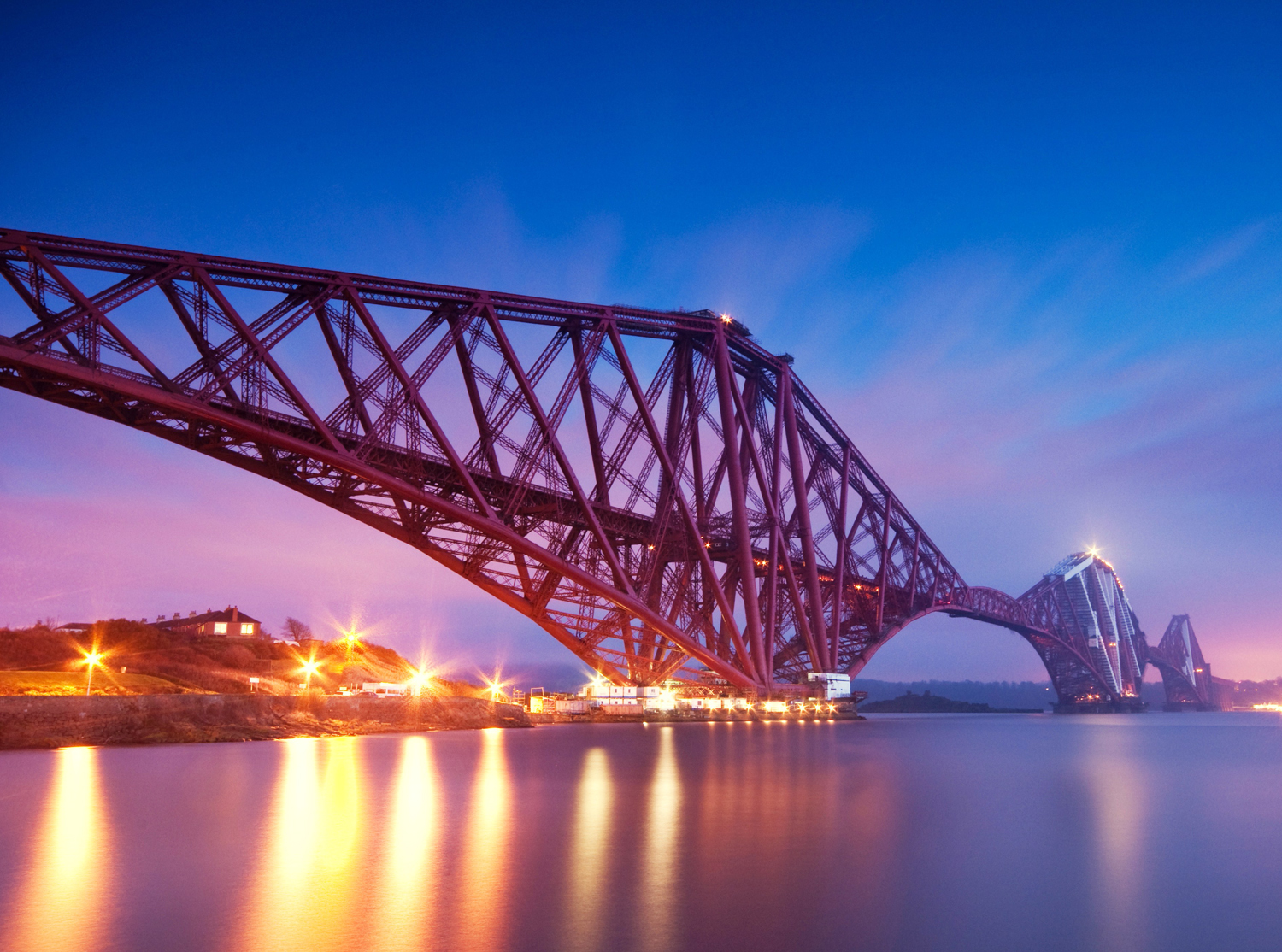
The Forth Bridge
Image courtesy of George Gastin
Reason for inclusion:
An amazing feat of engineering
The Forth Bridge (often called the Forth Rail Bridge) is a cantilever railway bridge over the Firth of Forth in the east of Scotland, and was opened on 4 March 1890. It connects Scotlands capital Edinburgh with Fife, and is owned by Network Rail Infrastructure.
When it was built, it had the longest single cantilever bridge span in the world, and today is still second in that list.
It is, even today, considered to be an engineering marvel. It is over one and a half miles in length, and the double rail track is elevated 46 metres above the water. The two main spans are over 500 metres long, with each of the three great four-tower cantilever structures being over 100 metres tall. The bridge is said to weigh over 50,000 tonnes.
During its construction, around 4,600 workers were employed, with nearly 100 sadly losing their lives and many more left injured by serious accidents. Where it was possible to do so, the bridge used natural features in its construction, such as an island (Inchgarvie) and the high banks on either side of the firth.
Painting the Forth Bridge is a well-known expression in Scotland for a never-ending task - it was said that the repainting of the bridge was required, and commenced immediately upon completion of the previous repaint. Although this is not true, the bridge does have a permanent maintenance crew.
7 Erasmus Bridge, Rotterdam
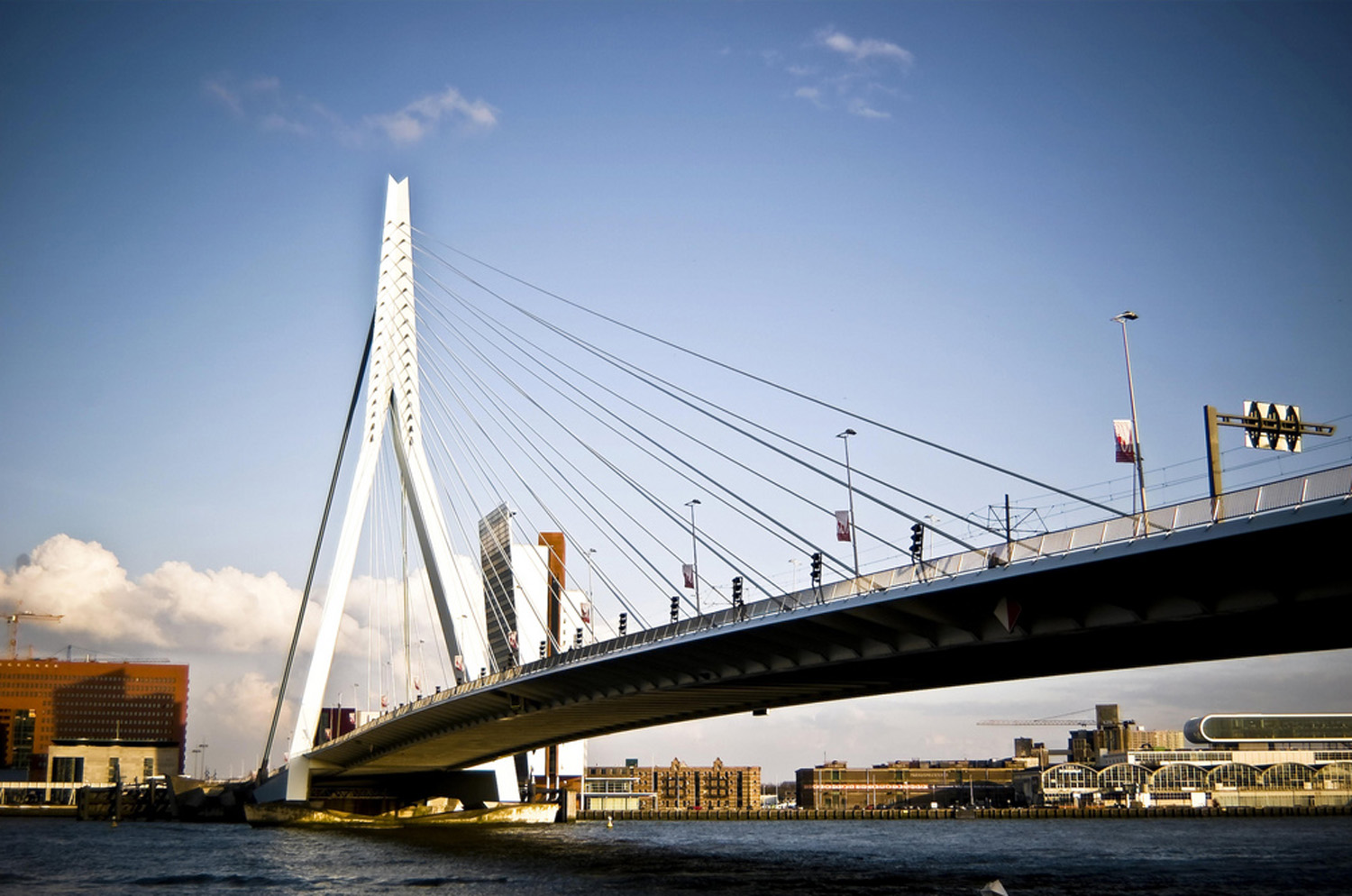
The Erasmus Bridge (Erasmusbrug)
Image courtesy of Huees
Reason for inclusion:
A modern masterpiece
The Erasmusbrug is a cable stayed bridge across the New Meuse River, and links the northern and southern halves of the city of Rotterdam in The Netherlands.
It was designed by Ben van Berkel and completed in 1996. The bridge is 802 metres long, and has an asymmetrical pylon which is 139 metres high. The bridge has a unique look which has earned it the nickname The Swan.
The southern span of the bridge has an 89 metre long bascule bridge for ships that cannot pass under the bridge. The bascule bridge is the largest and heaviest in West Europe and has the largest panel of its type in the world.
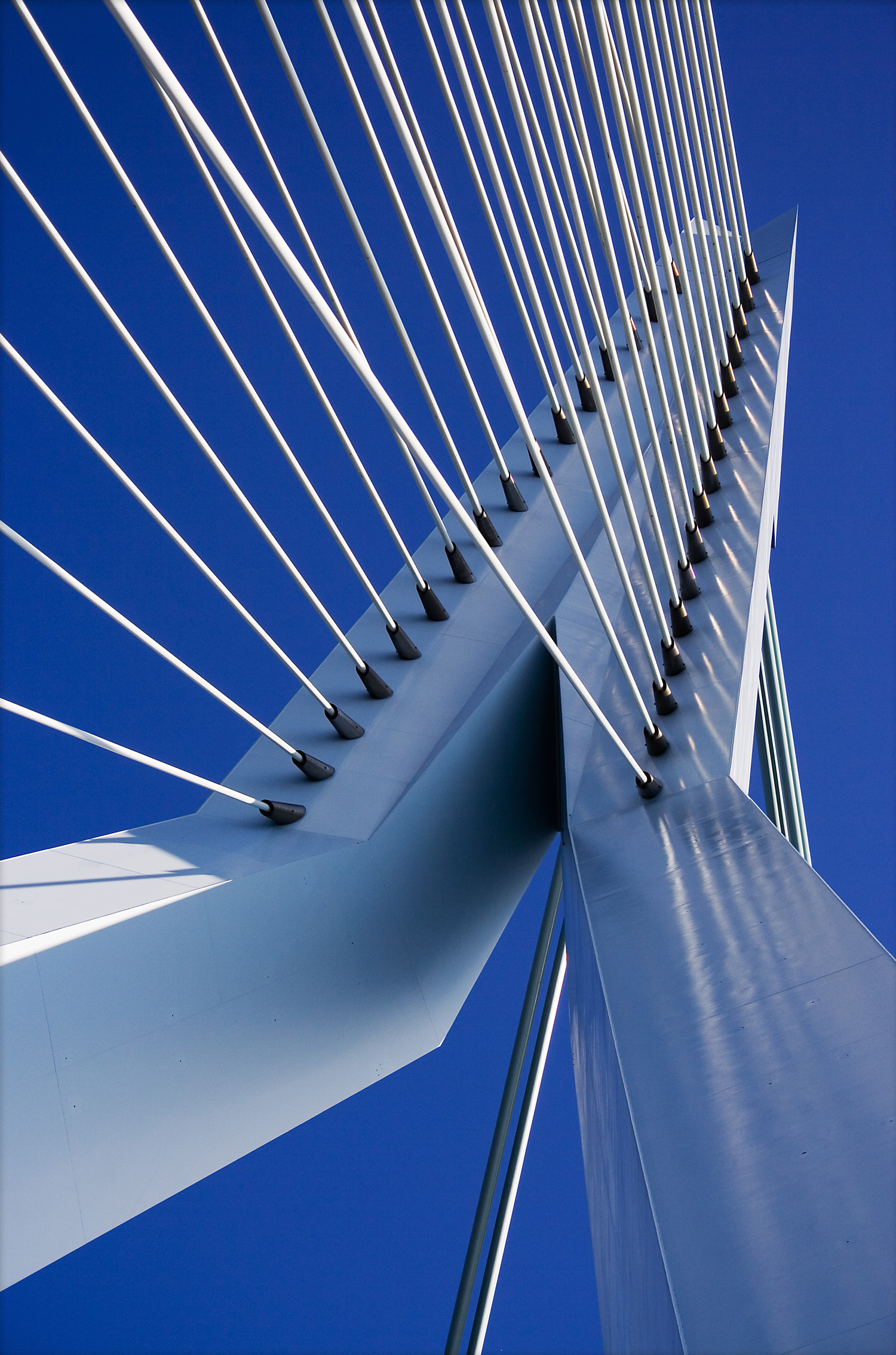
A view of the asymmetrical pylon
Image courtesy of Maurice
The bridge cost around 75 million Euros to build, although more spend was required shortly after it was opened as it was discovered that it would swing dangerously under strong wind conditions.
The bridge has a Hollywood pedigree - it was used in the 1998 Jackie Chan film Who Am I?, has featured as a concert backdrop (in a 2005 performance by DJ Tiesto), and was even crossed during the opening stage of the 2010 Tour de France (despite being in Holland!).


